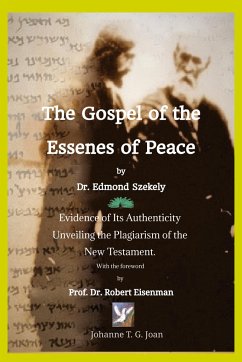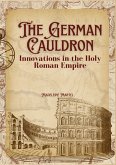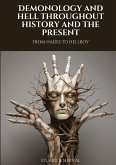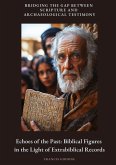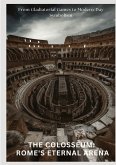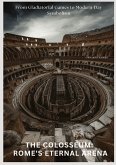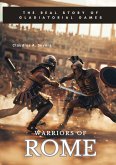Around 100 years ago, in 1923, Edmond Szekely came across a manuscript of unsuspected importance in the secret and dusty archives of the Vatican. This Gospel contained a mystery whose words and sermons seemed strangely familiar - almost as if they had been taken from the New Testament. But the parallels soon ended there, for the teachings of this gospel were clearly at odds with the established beliefs of the New Testament.The Essene Anabaptist, as I call him, taught personal responsibility. Whereas Christian doctrine presents man as fundamentally sinful and evil, and therefore incapable of observing God's commandments, and describes his quest for perfection as delusional, presumptuous and arrogant. The Essene Anabaptist revealed that perfection was man's goal on earth. A bold statement that runs counter to the foundations of established religion.In the New Testament, Jesus affirms the harmlessness of eating meat, whereas in the Essene Gospel, we are asked to consider, treat and protect animals as our brothers and sisters. The Essene Gospel declares the eating of meat to be the greatest sin - an attack on one's own body and soul. In the New Testament, Paul presents woman as a subject of man, while the Essene prophet praises her as the psychic force of man that he should listen to. And the earth itself, which plays no part in Christian teaching, is described by the Essene Baptist as our mother, to be cared for and preserved from harm.While the New Testament presents physical health as ephemeral and therefore undesirable, the Essene prophet sees physical purity and health as the foundation of spiritual salvation. He explained that all men were impure by nature, but that they held the key to health, happiness and perfection.The Essene prophet was not teaching a new religion, but a philosophy of life in harmony with nature. He was translating the language of nature, in which God has recorded his immutable laws, which have lasted since the creation of the earth and which appeared with its creation. This unknown version of Christianity would have led humanity in a completely different direction 2,000 years ago if it had not been falsified for reasons of power and economy.This English translation differs somewhat from the standard French version, and offers food for thought.For 90 years, the mystery of the terminological similarity between the Essene gospel and the New Testament gospels has remained unsolved. The Essenes' disciples had once written these words and whispered their message across the millennia, while the New Testament took root in people's hearts.But fate, hidden in the mists of time, had other plans. It was serendipity - or perhaps the action of an invisible hand - that led me to the forgotten pages. My fingers brushed over the signs as if they were touching the secrets of eternity itself.And so began my journey, an odyssey through centuries past, which took me through the dusty corridors of libraries and the silent nights of meditation. I discovered the hidden parallels that, like invisible threads, linked the Gospel of the Essenes to the writings of the New Testament.In my trilogy 'The Secret of the True Gospel', I have woven the words into a novel of passion and truth. The surgical precision of my research has revealed the inconceivable: the New Testament is a plagiarism, a distorted mirror that has obscured the light of the Essene Gospel for millennia. The present work summarizes the facts that prove the authenticity and 2000-year antiquity of the Gospel of the Essenes - thanks in particular to the writings of Nag Hammadi and the monastery of Mar Saba.
Bitte wählen Sie Ihr Anliegen aus.
Rechnungen
Retourenschein anfordern
Bestellstatus
Storno

